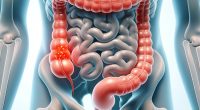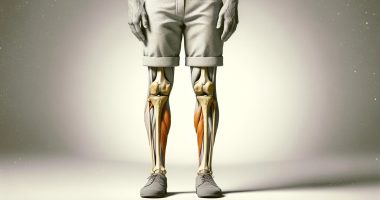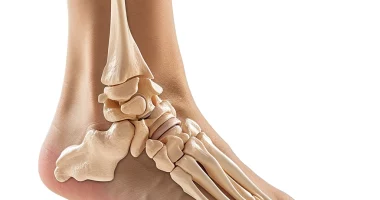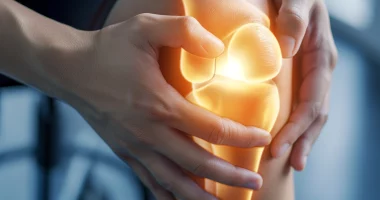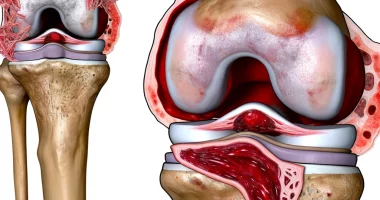Coccydynia
Definition
Anococcygeal pain syndrome (coccydynia) is a pathological condition characterized by episodic or persistent pain in the tailbone, anus, and rectum in the absence of organic pathology. Pain syndrome is more pronounced at rest and at night and is not associated with the act of defecation. The disease has a debilitating character and causes insomnia, a depressive state, and a disorder of sexual life, often leading to disability. The disease is diagnosed based on complaints and examination data after excluding other diseases. Treatment – physiotherapy and psychotherapy. In case all of these are ineffective, surgery is indicated.
General information
Anococcygeal pain syndrome is a disease, the main sign of which is persistent pain in the perineum, anus and coccyx. It is a polyetiologic pathology, which indicates various probable factors of its occurrence. Due to certain difficulties in identifying the cause and the choice of etiologic treatment measures, the cure of anococcygeal pain syndrome is a difficult, sometimes insoluble task.
Reasons
Coccydynia pain is usually not associated with weather changes, genitourinary diseases, osteochondrosis, and spondylosis. Anococcygeal pain may result from:
- a bruise or fracture of the coccyx (either fresh or from the past, sometimes quite a long time ago);
- disorders of the neuromuscular system of the pelvic floor and retroanal area;
- pathologies of the pelvic bones and lower spine, diseases of the spinal column with a pronounced neurological component;
- diseases of the rectum (hemorrhoids, anal fissure, proctitis and paraproctitis, sigmoiditis, etc.), including those treated,
- difficult labor, perineal prolapse;
- psychoemotional distress (sometimes patients with coccygodynia require psychotherapy or psychiatric counseling);
- stool disorders (chronic constipation or diarrhea), and the tendency to sit on the toilet for long periods.
Classification
Anococcygeal pain syndrome, by the predominant localization of pain, is divided into coccydynia directly (pain in the coccyx region) and anorectal pain syndrome (pain predominantly located in the region of the anus and rectum). Traumatic coccydynia is considered a separate disease, which occurs as a result of trauma to the coccyx, which is prone to pathological mobility.
Symptoms of coccidinia
Anococcygeal pain syndrome includes the following clinical symptoms: pain in the tailbone area (coccydynia), in the anus (anorectal pain), occurring for no apparent reason at any time of the day, may have a variable duration and also suddenly or gradually subside. The pain may differ: blunt or sharp, cutting, stabbing, constant and contraction-like, pulsating. There may be irradiation of pain to the gluteal region, sacrum, and thigh. The pain is persistent and long-lasting (sometimes exists for several years), occurs and stops suddenly, may increase and weaken depending on the body’s position, and intensifies when walking, pushing, and pressing on the coccyx.
Pain localized in the rectum (proctalgia) usually appears suddenly, more often at night, lasts for 15-30 minutes, and then subsides. Intervals between attacks of proctalgia can be quite long. Pain is sometimes accompanied by intestinal spasms. Pain in the perineum can contribute to the development of painful priapism in men. Sometimes, an attack of anorectal pain can be provoked by sexual intercourse. Anorectal pain syndrome during the acute clinic often accompanies general neuro-vegetative symptoms – pallor or excessive sweating.
Coccydynia is localized predominantly in the coccyx area, intensifies when pressure is applied to it, and may increase after walking.
Anorectal neuralgia is a diffuse pain in the anus area, sometimes with irradiation to the sacrum and buttocks, thigh, and vagina. Anorectal neuralgia most often occurs in postmenopausal women and is often associated with various neurasthenic and neurologic diseases (depression, neuroses, hypochondria).
Complications
Anococcygeal pain syndrome is often neurogenic. Many patients associate prolonged pain with a dangerous, fatal disease and often develop persistent carcinophobia; patients require the attending physician to perform the most complete examination and prescribe surgical treatment.
Diagnosis
The diagnosis of “anococcygeal syndrome” is established only after a thorough examination and exclusion of the organic nature of the soreness. To do this, it is necessary to perform diagnostic measures to exclude pathologies of the rectum (hemorrhoids, anal fissure, paraproctitis, etc.), genital organs (adnexitis, endometritis, prostatitis), neurological and rheumatologic diseases (radiculitis, spondylitis, sciatica). Exclusion (or detection and cure) of these pathologies with subsequent persistence of painful manifestations allows the diagnosis of anococcygeal pain syndrome.
To analyze painful sensations, the patient is examined in the knee-lock position and then on the gynecological chair. A proctologist performs a finger examination of the anus, determining the presence or absence of scarring changes, signs of inflammation, trauma to the coccyx and sacrococcygeal-coccygeal junction, spasm of the muscles of the anal canal or pelvic floor. Women are recommended to consult a gynecologist; bimanual examination of the vagina and rectum is performed.
- Examination of the rectum. In order to exclude diseases of the end parts of the large intestine, sigmoidoscopy is performed. Anoscopy (examination of the anal canal) and sigmoidoscopy give an idea of the state of the rectal mucosa, allowing to detect internal hemorrhoids, rectal polyps, and inflamed anal papillae (papillitis).
- X-ray. X-ray examination of the rectum (irrigoscopy) can detect tumors and narrowing of the lumen of the large intestine. Radiography is also used to visualize the state of the coccyx and sacrum, pelvic bones, and hip joints. X-ray radiographs can show traces of coccyx fracture, dislocations (subluxations), areas of osteoporosis, and other bone tissue pathologies.
- Laboratory tests. Include coprogram, bacteriological stool culture, fecal occult blood test, urinalysis, if necessary, vaginal swabs in women, and prostate secretion in men are taken for analysis. Intrarectal invagination is detected by irrigoscopy.
In addition, pelvic organs are visualized by ultrasound. To diagnose anococcygeal pain syndrome, a urologist, a gynecologist, an andrologist, and a traumatologist are often involved in consultations, and a neurological examination is mandatory. To identify the psychological causes of pain, a consultation with a psychotherapist is prescribed.
Coccidinia treatment
Careful examination and identification of the cause of pain syndrome are one of the main factors in the success of treatment. Therapeutic measures include etiologic treatment (eliminating the cause of the disease), pathogenetic therapy (blocking the mechanisms of pathology development), and symptomatic means (relieving the patient from pain).
Conservative therapy
Nowadays, medicine pays special attention to the treatment of pain itself. In developed countries, a system of medical institutions is being organized, primarily aimed at treating pain of any, including unknown etiology. It is preferable to treat pain without the use of narcotic analgesics: apply blockades of nerves with novocaine and local anesthetics. Today, cortisone blockades are limited, as they have lower efficacy and are poorly tolerated by patients. In the complex treatment of coccidinia, the use of physiotherapeutic techniques is quite common:
- low-intensity laser;
- ultrasound;
- balneology.
Neuroblocks, suppositories, and enemas with anesthetic and anti-inflammatory agents are also used. Massage is performed to relieve spasms of the perineum and pelvic floor muscles.
Psychotherapy
Sometimes (in the case of the psychogenic nature of pain), a good effect is achieved by using a placebo. In cases of increased anxiety, depression, and other neurotic conditions, treatment with psychotherapeutic effects and drugs of central action (sedatives, tranquilizers, neuroleptics, etc.) is prescribed. If necessary, treatment is prescribed with the participation of a psychiatrist.
Surgical treatment
Traumatic coccydynia may be an indication for surgical treatment (coccyx extirpation). Resection of the tip of the coccyx or its fixation to the sacral bone is performed in case of its complete or partial detachment. If this is not observed, surgical intervention is inappropriate and may worsen the condition. It is possible to plan surgical interventions only if the traumatic origin of coccydynia is accurately determined and other possible causes of pain are excluded.
All these treatment options are available in more than 770 hospitals worldwide (https://doctor.global/results/diseases/coccydynia). For example, Tailbone removal can be done in 43 clinics across Germany (https://doctor.global/results/europe/germany/all-cities/all-specializations/procedures/tailbone-removal).
Prognosis
Anococcygeal pain syndrome is quite difficult to cope with therapeutic measures and has a very pronounced psychological-emotional component. However, with a comprehensive approach and thorough examination, a correctly chosen treatment tactic relieves patients of pain and restores their quality of life. Coccydynia and anorectal pain, not associated with severe pathologies of the bones of the spine, pelvic organs, and perineum, do not lead to the development of somatic complications and do not cause death.
